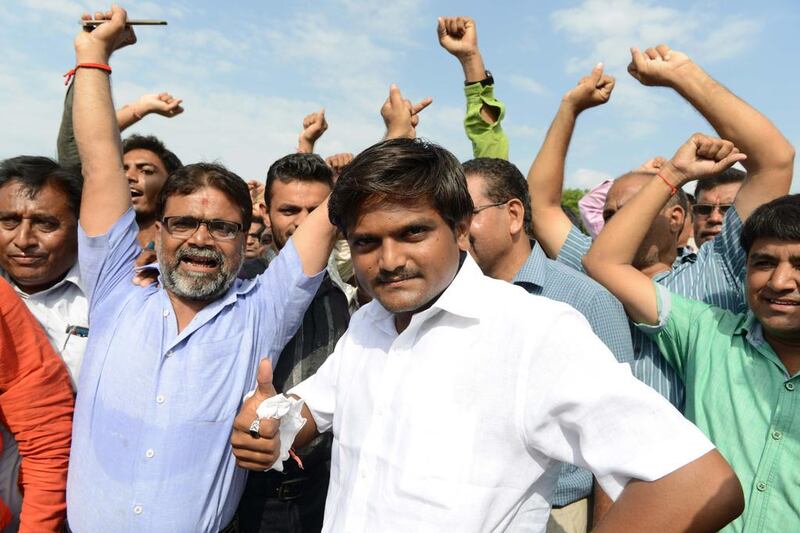The Patels, one of India’s most prosperous communities both within the country and among the Indian diaspora, are demanding to be classed among the Other Backward Castes (OBCs).
They originate from the progressive state of Gujarat and have been credited with having made a significant contribution to its prosperity.
Last week, however, they left Gujarat paralysed. In their agitation for inclusion in India’s policy of affirmative action that reserves quotas for India’s lower castes in the employment and education sectors, the community rallied in their millions. Riots broke out and eight people were killed.
India’s caste system is complex, complicated and historically rooted. Over the centuries it has been an efficient mechanism of maintaining power hierarchies in sociocultural and economic ways.
Reservations in jobs and education, and seats in parliament and the state assemblies for those at the bottom of the caste pyramid – the Scheduled Castes and the Scheduled Tribes – was enshrined in India’s constitution. The aim was to readdress the severe and sclerotic imbalances wrought by thousands of years of caste- determined discrimination.
In 1989, middle sections of India’s caste system were also given inclusion in the quota system by the then ruling party, Congress, under the nomenclature of OBCs.
In theory, the reservations model is a socially corrective measure, although its implementation has proved extremely messy and controversial. The OBCs form a significant part of India's vote bank and the main parties have often used the quota system for political advantage.
Recent years have seen more established communities jostle for the OBC nomenclature as a route to accessing reservations. Most recently, the demand of the Jats – a prosperous farming community from northern India – for OBC status was overturned by India’s Supreme Court.
The Patel clamour is the latest, tragic turn to the debate. Led by an abrasive and vociferous 22-year-old, Hardik Patel, the socially and economically dominant Patels are challenging the logic of reservations. On one hand, their protest makes a mockery of the reservations principle. On the other hand, the Patels’ glory is being challenged. Their dominance in India’s diamond industry is being usurped by international companies and their traction in the agricultural sector is not secure, and even their interests in small and emerging businesses are being threatened.
The popularity of India’s ruling party in Gujarat – the BJP, which also governs at a national level – owes a lot to support from this affluent community who comprise 20 per cent of the state. Nevertheless, while the Gujarat government has remained unrelenting so far, they are finding themselves in a conundrum.
Mr Patel has been making his speeches not in the state vernacular of Gujarati but in the national language Hindi, suggesting he is speaking not just to a Gujarati audience but to the Indian stage. Mr Patel’s speeches are aimed at his fellow Gujarati, prime minister Narendra Modi and, more significantly, at India’s youth.
India has a youth profile that is unparalleled in the world. About 65 per cent of its population is 35 or below, with 50 per cent being 25 or below. Moreover, India’s youth are markedly aspirational, and it is this aspiration that Mr Patel is galvanising in his threat to upset the reservation applecart. This could potentially lead India to anarchy.
The need of the hour, I believe, is an urgent rethink of how affirmative action is theorised and implemented. In Indian cities there has been a gradual blurring of caste demarcations which have been substituted by economic markers.
However, most of India – the rural and semi-urban areas, and even some urban pockets – still functions socially around the fulcrum of the caste system. In select India, economics has shifted the caste dynamics, but in most of India the caste system is alive and well.
For the reservation system to be pragmatic and workable, if not fair, the reservation categories need revision to include aspects of both the individual’s historically inherited caste and their economic situation. Only then will the model of affirmative action become fit for 21st century India.
Priya Virmani is a commentator on politics and economics based in London





